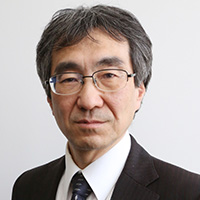
Abstract: Our laboratory has been engaged in two broad and connected areas of research that relate to human surroundings: “bio-inspired robotics” and “rescue robotics.” Living creatures have survived and been optimized by natural selection. An understanding of the functions of living things is very useful in creating new artificial robots. In our lab, we are interested in analyzing the beautiful skills and behaviors of living things, and we are trying to find solutions to the following questions, among others: Why can living snakes move without legs? Why do quadrupeds change their gait patterns (for example, walk, trot, gallop) depending on their speed of movement? What is the mechanism of the flocking behaviors of birds and fish? How can small ants build a big anthill? Why can human beings walk with two legs? Based on our understanding of these phenomena, we can apply our knowledge to create robots to solve industrial problems.
We believe that rescue robot systems are another important application of robotic technology. During my time as an employee at Kobe University, one of my masters’ student, Mr. Motohiro Kisoi, was killed in the Great Hanshin-Awaji Earthquake on January 17, 1995. Since this tragic event, I have been putting my heart into the development of useful rescue robot systems and rescue engineering. When the Great East Japan Earthquake occurred in 2011, we dispatched and utilized the rescue robots KOHGA3 to inspect damaged buildings in Hachinohe and Aomori, and we dispatched underwater robots to search for bodies in Minamisanriku, Miyagi, and Rikuzentakata,Iwate. My dream is to establish an international rescue robot team, like the popular TV show Thunderbirds, using advanced robotic technologies. If we can dispatch rescue robots from Japan to disaster sites everywhere in the world for disaster response and recovery, it will be a strong contribution to the world.
In this keynote speech I would like to introduce our research activities.
Bio: Fumitoshi Matsuno received the Dr. Eng. degree from Osaka University in 1986. In 1986 he joined the Department of Control Engineering, Osaka University. He became a Lecturer in 1991 and an Associate Professor in 1992, in the Department of Systems Engineering, Kobe University. In 1996 he joined the Department of Computational Intelligence and Systems Science, Interdisciplinary Graduate School of Science and Engineering, Tokyo Institute of Technology as an Associate Professor. In 2003 he became a Professor in the Department of Mechanical Engineering and Intelligent Systems, University of Electro-Communications, Tokyo. Since 2009, he has been a Professor in the Department of Mechanical Engineering and Science, Kyoto University. He holds also posts of the Vice-President of the Robotics Society of Japan, Institute of Systems, Control and Information Engineers (ISCIE) and the Vice-President of NPO International Rescue System Institute (IRS). His current research interests lie in robotics, swarm intelligence, control of distributed parameter system and nonlinear system, and rescue support system in disaster. Dr. Matsuno received many awards including the Outstanding Paper Award in 2001, 2006 and 2017, Takeda Memorial Prize and Tomoda Memorial Prize in 2001 and 2017 from the Society of Instrument and Control Engineers (SICE), the Prize for Academic Achievement from Japan Society of Mechanical Engineers (JSME) in 2009, the Best Paper Award in 2013 from Information Processing Society of Japan, and the Best Paper Award in 2018 from RSJ. He is a Fellow member of the SICE, the JSME, the RSJ and a member of the IEEE among other organizations. He served as a president of ISCIE, a co-chair of IEEE RAS Technical Committee on Safety, Security, and Rescue Robotics (SSRR), an Editor-in-Chief of Journal of RSJ, an Editor of Journal of Intelligent and Robotic Systems, a chair of Steering Committee of SICE Annual Conference, a General Chair of IEEE SSRR2011 and IEEE/SICE SII2011, SWARM2015 etc. He is an Editor of Journal of Robotics, International Journal of Control, Automation, and Systems (IJCAS), and Journal of Artificial Life and Robotics etc.